-
 Vendor:Gesipa
Vendor:GesipaGesipa® Taurus 4 Air Rivet Gun - 2.4mm-6.4mm Ø
Regular price $2,717.00 AUDRegular price -
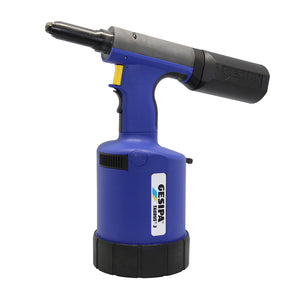 Vendor:Gesipa
Vendor:GesipaGesipa® Taurus 3 Air Rivet Gun - 2.4mm-6.4mm Ø
Regular price $2,508.00 AUDRegular price -
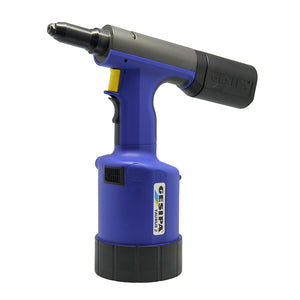 Vendor:Gesipa
Vendor:GesipaGesipa® Taurus 2 Air Rivet Gun - 2.4mm-4.8mm Ø
Regular price $1,903.00 AUDRegular price -
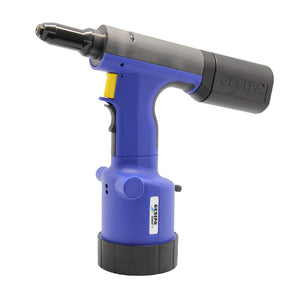 Vendor:Gesipa
Vendor:GesipaGesipa® Taurus 1 Air Rivet Gun - 2.4mm-4.0mm Ø
Regular price $1,837.00 AUDRegular price -
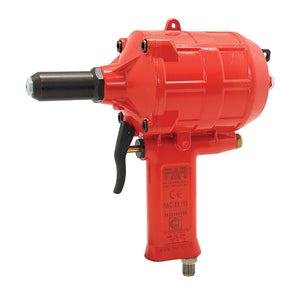 Vendor:FAR
Vendor:FARFAR RAC83 Air Rivet Gun - 2.4mm-4.8mm Ø
Regular price $412.50 AUDRegular price -
 Vendor:FAR
Vendor:FARFAR RAC171 Air Rivet Gun - 3.2mm-7.8mm Ø
Regular price $1,485.00 AUDRegular price -
Save $104.50 AUD
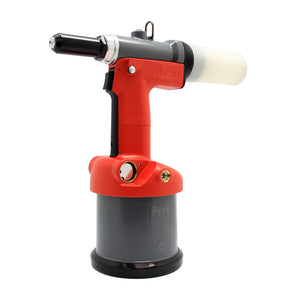 Vendor:FAR
Vendor:FARFAR RAC182 Air Rivet Gun - 2.4mm-4.8mm Ø
Regular price $940.50 AUDRegular price$1,045.00 AUD-$104.50 AUD Sale price $940.50 AUD -
 Vendor:Gesipa
Vendor:GesipaGesipa® Taurus 2 Air Speed Rivet Gun - 2.4mm-6.4mm Ø
Regular price $2,959.00 AUDRegular price -
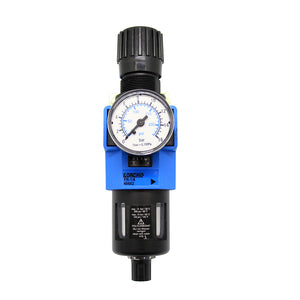 Vendor:RivetLab
Vendor:RivetLabAir Regulator With Water Trap 1/4" BSP
Regular price $104.50 AUDRegular price -
 Vendor:FAR
Vendor:FARFAR 90º Angle Head Kit
Regular price $1,529.00 AUDRegular price
How Does An Air Rivet Gun Work?
An air rivet gun, also known as a pneumatic pop rivet gun or an air-powered pop rivet gun, is a specialised handheld tool used to install rivets in various applications. They utilise compressed air as their power source to drive the rivet-setting process efficiently. Here is how it works:
- Rivet Insertion: Insert the mandrel part of a rivet into the tool’s nosepiece. Then, insert the rivet body into the pre-drilled hole of the materials you want to join.
- Trigger Activation: When the operator pulls the trigger, compressed air is released into the tool. This creates a high-pressure environment.
- Rivet Setting: High-pressure air pushes a piston in the gun. This piston presses against the hydraulic oil*, creating pressure in a chamber. The pressure then activates the jaw mechanism. This pulls the rivet mandrel, expanding the rivet body and clamping the materials together.
- Mandrel Extraction: Some rivet pneumatic guns are made to collect the used mandrel. They then eject it into a removable container for easy disposal.
*Most air-powered rivet guns nowadays are air-hydraulic type. A few air tools are air-powered only, such as the FAR RAC83 Air Rivet Gun.
Advantages of Air Hydraulic Rivet Guns
- Speedy Installation: Air rivet guns excel in speed. They efficiently expel spent mandrels into a detachable container, reducing downtime and boosting productivity.
- Superior Traction Power: Air rivet guns often offer greater traction power than cordless rivet guns. This makes them ideal for installing large-diameter rivets, ensuring a secure connection.
- One-Handed Operation: Some air tools use air suction to hold rivets in the nose. This allows for easy one-handed operation. This feature simplifies the process and enhances efficiency.
- Ease of Use: Unlike manual rivet tools that require a lot of effort, air tools are easy to use and less tiring. They streamline the installation process, reducing operator fatigue.
- Continuous Operation: With air rivet guns, there’s no need to worry about battery life or replacement. These tools rely on continuous compressed air for consistent operation.
Considerations When Using a Pneumatic Rivet Gun
To ensure the safe and effective use of your air tool, consider the following:
- Correct Nosepiece Selection: Always choose the right-sized nosepiece to match your rivets, ensuring a secure fit.
- Secure Nosepiece: Before use, tightly secure the nosepiece with a spanner to prevent mishaps during operation.
- Proper Air Pressure: Adjust air pressure using an air regulator according to the tool’s specifications. Overpressurisation can damage the tool, so adhere to the manufacturer’s guidelines.
- Safety First: Safety is paramount. Equip the tool with a mandrel collector before operation, and empty it regularly to prevent jams. Wear eye protection and follow all manufacturer safety instructions.
- Test Run: Conduct a test run before high-production tasks.
Maintaining Your Air Riveter for Peak Performance
For best results and longevity, follow these maintenance tips:
- Regular Lubrication: Keep the tool lubricated by adding a few drops of air tool oil into the air inlet.
- Hydraulic Oil Maintenance: Follow the manufacturer’s instructions for maintaining the hydraulic oil level. Signs of low oil include difficulty installing rivets in one stroke or incomplete rivet insertion.
- Frequent Cleaning: Regularly clean the jaws and nose area. This helps prevent rivet swarf buildup and keeps the jaw mechanism working well.
Please read the Mastering Air Rivet Guns: Tips and Maintenance blog for more information on air rivet guns.












